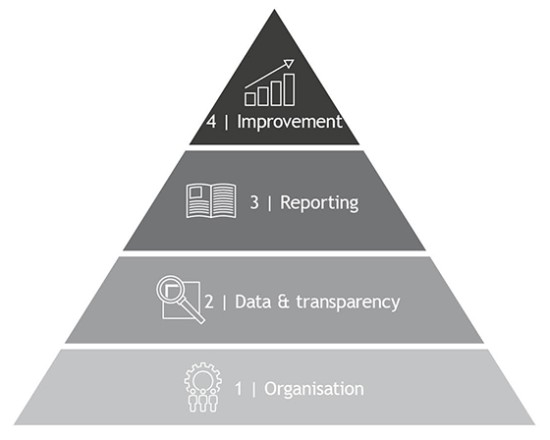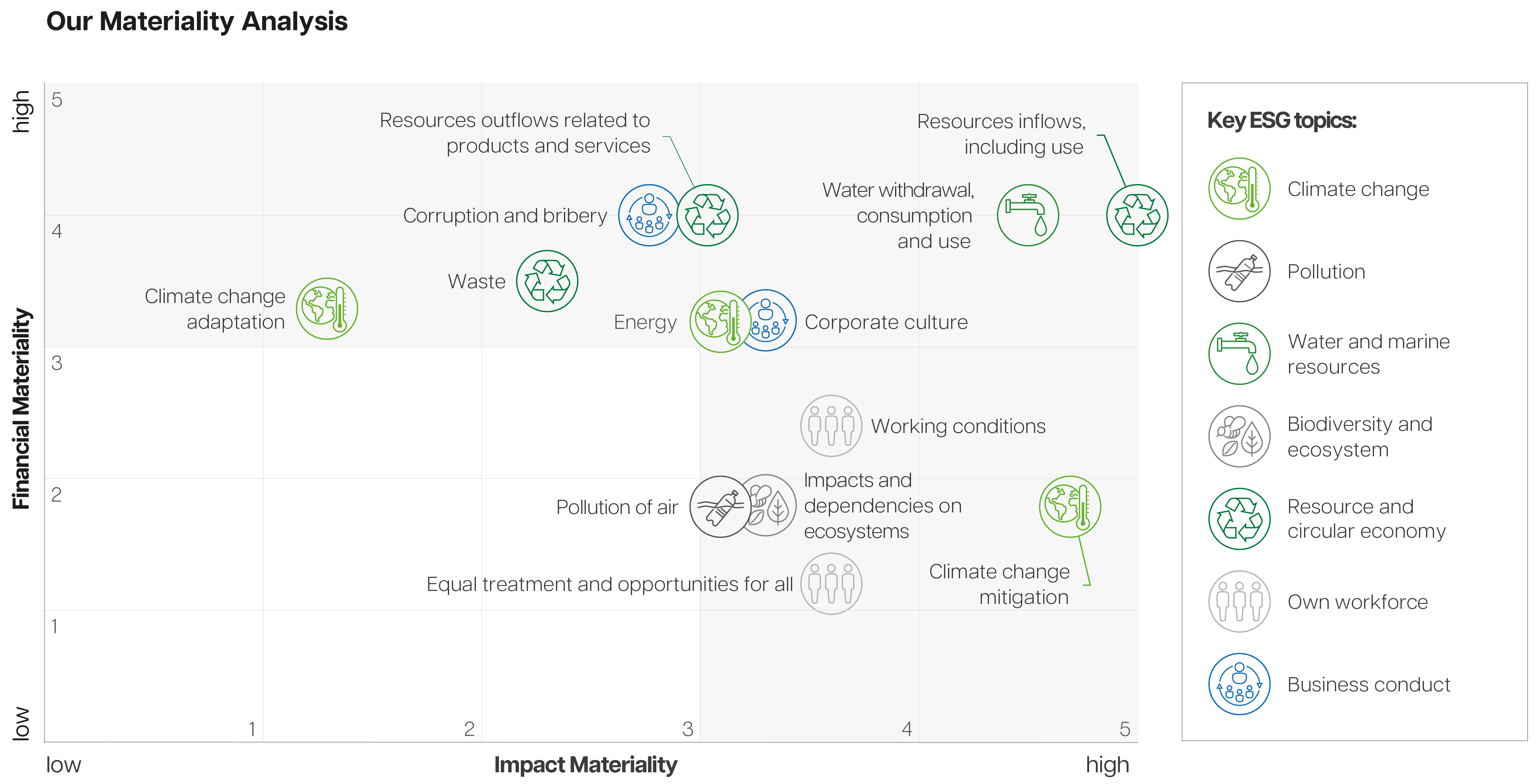
Towards net zero
Aiming for climate neutrality by 2045
The Laumann Group has set itself a clear goal of climate neutrality: by 2045, the Group aims to operate in a climate-neutral manner across the entire value chain at all locations and across all scopes.
In order to limit global warming to 1.5°C compared to pre-industrial levels, almost all countries in the world agreed to reduce their carbon dioxide emissions to net zero by 2050 as part of the 2015 Paris Agreement. The German government is going one step further and has set the goal of greenhouse gas neutrality for Germany by 2045.
As a company, we also want to achieve greenhouse gas neutrality by 2045. As the construction industry is one of the most emission- and resource-intensive industries, we can actively contribute to achieving the global climate protection targets.
Our group-wide measures at the moment include improving energy efficiency, using renewable energy through in-house production and purchasing green electricity, as well as reducing CO₂ emissions from our PVC products through the use of recycled materials.
Our global CSR Team is actively working on the recording of our emissions. Since 2022 we have been recording our Scope 1 and 2 emissions annually and plan to fully determine our Scope 3 emissions by the end of 2025.
By the end of 2025, we also want to join the Science Based Targets initiative (SBTi) to have our climate targets scientifically verified.
Facing global challenges

Only through measurement and calculation can we determine reliable key figures that allow us to accurately record the impact of our actions. In order to define and measure these indicators properly, we have initiated a Group-wide CSR management system.
With our CSR management, we want to cultivate and systematically develop the culture of corporate responsibility. The central aim is to gain transparency and define potential for improvement as well as to identify and replicate aspects of global best practice.
We are currently working intensively on determining our Scope 1-3 emissions by setting milestones. For example, we have recorded the Scope 1 and 2 emissions for the VEKA Group for 2021 and had them externally certified.
Our progress
As a globally active group of companies, we have a lot of work ahead of us. We are taking on this challenge and will report regularly on our progress towards climate neutrality.
In general, avoiding and reducing emissions is our preferred approach and our first choice. We only want to use compensation measures when emissions cannot (yet) be avoided. These measures, if necessary, will be transparently disclosed and are not equivalent to reduction measures.
Double Materiality analysis
As part of the Corporate Sustainability Reporting Directive (CSRD) we will be legally required to conduct sustainability reporting in the future. This means that in our annual management report, we will include not only financial, but also non-financial information on environmental, social, and governance (ESG) aspects. To identify the ESG topics relevant to us, we conducted an initial double materiality analysis for the entire Laumann Group in 2023.
The European Sustainability Reporting Standards (ESRS) define all relevant sustainability topics for companies. Using the materiality analysis, each company can determine, which topics have the greatest impact or are of the greatest financial significance.
The following materiality matrix was developed for the Laumann Group:

Accordingly, at the moment 13 sub-topics of the ESG topics are subject to reporting requirements for the Laumann Group in the future:
- Resource inflow, including resource use
- Water withdrawal, consumption and use
- Resource outflows related to products and services
- Corruption and bribery
- Energy
- Corporate culture
- Working conditions (own workforce)
- Climate change mitigation
- Impacts and dependencies on ecosystem services
- Pollution of air
- Equal treatment and equal opportunities for all (own workforce)
- Waste
- Climate change adaptation
Based on our materiality analysis we know, which areas have the greatest leverage for us. This mean, we can take effective measures in the future and thus contribute to a sustainable economy in the long term, reducing the negative impacts of our operations.
